Buenos Aires -- Teatro Colon and Surroundings
The Buenos Aires Opera House and Surroundings
Visited November 29, 2005
We spent the better part of three days in Buenos Aires (BA), just enough to whet our appetite for this diverse and exciting city. One morning we trekked over to the Teatro Colón, one of the greatest opera venues in the world. (While we were in BA, the opera performers were on strike, much to the consternation of some of our tour mates who had tickets. However, the opera house tours in both languages were fully booked and the Teatro Colón brimming with activity including dress making, ballet practice, set painting, etc.)
This is the second Teatro Colón (Why opera houses get named after Columbus is beyond me). In only 30 years, BA outgrew its first Teatro Colon as over 50 operas could be performed in this opera-crazed city in a single year. After twenty years of construction, Teatro Colón opened in 1908 when BA was a city made wealthy after railroads linked its
great port with the fertile pampas. As construction dragged on, one of the Italian architects died and the other was assassinated. The theater is reputed to have perfect acoustics but we couldn’t tell when we were ushered into the dark hall that seats about 2,500 in three rows of boxes plus four general seating tiers with standing room for an additional 500 people..
The lobby displays a model of the building which makes it easier to study the Italian Renaissance and German architectural influences on its two Italian designers; some French finishing touches were added by the Belgian architect who took over in 1904. (Architects
call this hodge-podge: eclectic. Electism appears to particulary affect opera venues as I was reminded each morning at my Paris subway stop – the Opera Garnier.
The second picture shows a proposed landscaping addition, Plaza Estado Vaticano, intended to submerge the parking and create a park. Here’s a couple closer-ups of the cast awning at the lower center of the above picture:
Two views of the grill work in the Colon Teatro's entrance awning
Inside, photos were verboten except for the entrance hall with its Veronese marble.
Here’s a couple of shots. The first is of an upper intermission hall…
Lobby view of Colon Teatro
…and the area over the main entrance:
Inside the Colon Teatro's main entrance
El Salón de los Bustos
Near the entrance is “El Salón de los Bustos” (Where are we now? We’re in the Hall of the Busts. In Houston, we are thinking about renaming the Enron building with that title). Here’s two famous bustos. I can identify the one on the right, but who’s that on the left?
Jane is busting out all over
Here’s a hint, it’s one of these dead white Europeans all of which have their busts in the hall: Beethoven, Bellini, Bizet, Gounod, Mozart, Rossini, Verdi or Wagner
The entrance hall contains marble from Italy (Carrara), Belgium, and Portugal and includes this stain glass canopy to which the shaky photographer fails to do justice.
At the end of our tour, we were ushered into the Salón Dorado on the same level to enjoy a very short violin recital in this French decorated hall patterned a little on Versailles.
A 1970s expansion created a virtual opera factory by tunneling under nearby streets. Below Colon Teatro we saw a beehive of performing art support activities including ballet practice in a circular mirrored hall, the painting of huge scenery backdrops, costume sewing, vocal rehearsals -- as well as storage rooms for shoes, wigs, and costumes from just about every opera staged here. The theatre also contains a library (with every opera program since it opened in 1908), an experimental center to encourage modern performing arts in Argentina (Centro de Experimentación del Teatro Colón), and (you guessed it!) a small but jammed gift shop. The theatre also supports several standing orchestras and ballet companies, including some limited to those under 25 years of age. Pretty much all of the big names in music have appeared here (and continue to do so) since the place opened nearly 100 years ago.
Park Lavalle
Teatro Colon, backs into Avenue 9 July and sits on the site of the first railroad station. (Remember the train in the museum in Lujan?). The theater’s entrance is on Libertad Street on the Park Lavalle, a landscaped square surrounded by serious buildings like itself. Here’s a picture of the Opera House from the other side of the square. (It looks like it’s on “El Streeto de la busses” here):
Here’s a view of Park Lavalle seen from the opera entrance:
Park Lavalle as seen from Teatro Colon
Park Lavalle contains a military statue (why are we not surprised). This one has fourteen sides, one for each Argentine state when it was constructed. It honors general and governor Juan Lavalle, best known for opposing (and losing to) an early Argentine dictator.
General Lavalle's statue in his square
Here’s another view of the statue with another serious government building kiddy-corner from the opera:
Plaza Lavalle view of the Palace of Justice
Directly across the street from the opera is a school named after President Roca whose life we mused upon while in the Bariloche square:
General Roca's school facing Lavalle Square
Here’s another view of the plaza taken from the side entrance to the opera house. In a paparazzo coup, we
snapped a famous diva and several BA taxis to pose for us:
Jane at the opera house side
A street from the edge of the two block long Plaza Lavalle, leads to the obelisk at Plaza de la República.
The obelisk (and McDonald's) as seen from the approach from Park Lavalle
The very wide 9 de Julio Avenue
We walked down this street to get to the Obelisk, crossing what the Argentines consider to be the widest avenue in the world: 9 de Julio Avenue (Avenue 9 July), named after the Argentine independence day in 1816). Much of turn-of-that-century Buenos Aires looks like Paris, mimicking the five story limestone buildings that populate much of the European capital’s close-in neighborhoods. However, Avenue 9 July is way too wide to be Parisian – About 460 feet with 14 traffic lanes in what is really 4 separate roads divided by medians. BA is laid out in a grid and the Porteños devoted a whole block to the avenue making it a city block wide.
Here’s a photo of the middle lanes of 9 de Julio Avenue complete with its buckle-up sign and view of the
obelisk (You may need to click to enlarge this picture to read the sign):
Buckle up: the grand avenue 9 de Julio
Planned in 1888, construction on the avenue started in 1937 and completed in the 1960s, demonstrating that Houston contractors are not the slowest when it come to finishing a road.
Obelisco de Buenos Aires
Phallic Pun Warning -- proceed at your own risque
Our last picture shows Buenos Aires’ Obelisk which sits smack dab in the center of Plaza de la República on 9 de Julio Avenue. The Plaza marks the site of the first unfurling of the Argentine flag (pop quiz: remember General Manuel Belgrano on the Luján page?) The obelisk was erected (what other verb can we use) to commemorate the 400th anniversary of the founding of the city. In fact, the city founded in 1536 had to be abandoned 5 years later due to a pesky Indian problem. Fortunately for the Spanish but not for the indigenous peoples, the 1580 re-founding of BA took hold. The 201 foot tall obelisk was built in 4 weeks in 1936 (obviously not by the people who built the 9 de Julio Avenue). Our Obelisk in Washington, D.C. is over twice as tall but took 36 years to complete. We Texans, of course, did much better, building our art deco San Jacinto Obelisk near Houston in only 3 years. We don’t need to tell you that it is taller than its little brothers inside-the-beltway or in BA. By coincidence, San Jacinto’s construction started the same year as the Obelisco de Buenos Aires. (And all this 62 years before Viagra hit the market).
Is that an obelisk in your pocket or are you just glad to see me?
As a symbol of Buenos Aires, the obelisk gets a lot of iconic augmentation such as signs and coverings. In fact, we missed one by only 2 days – the celebration of 2005 World AIDS Day. On December 1 BA draped its obelisk in (you guessed it) a large pink condom.
Got Google Earth yet? If not, down load it here and then try this bookmark of the Opera House area (click on "see map in Google Earth")
Typical bottom-of-the-blog stuff
Internet Explorer users, want to see more? Then download the free Firefox browser by clicking here – these pages display better in Foxfire and its more secure than that Microsoft thing.
Where are we now? Click here for an interactive map of Argentina.
----------------------------------------------------------------------
Ignore these links unless you want to see other bloggers views on:
Labels: vacation travel
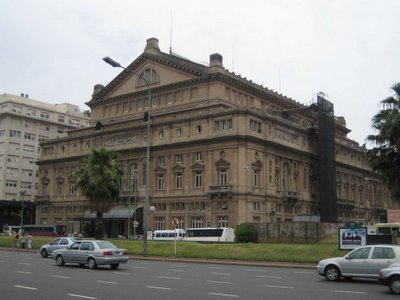






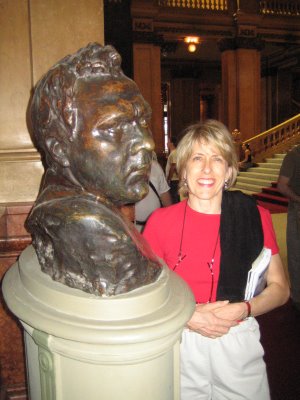
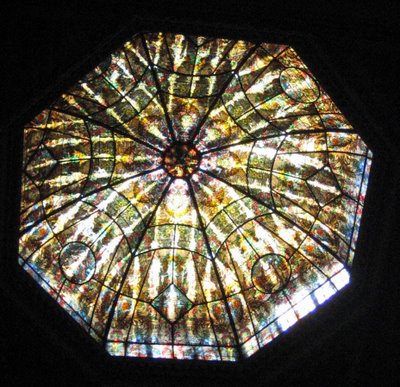
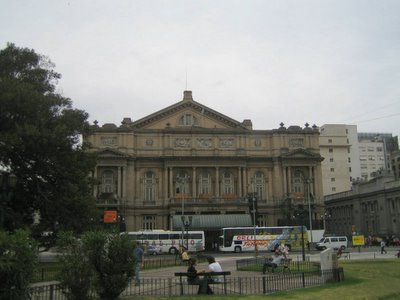



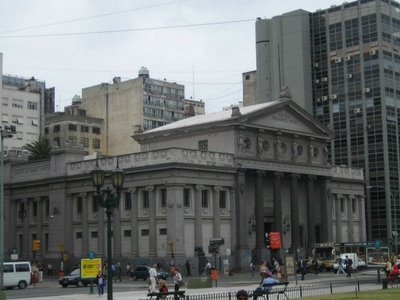
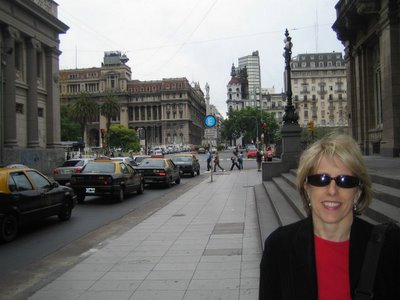
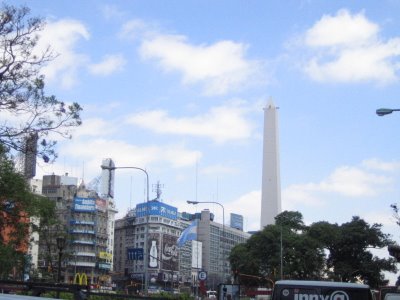
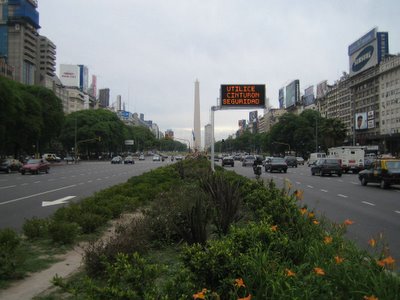
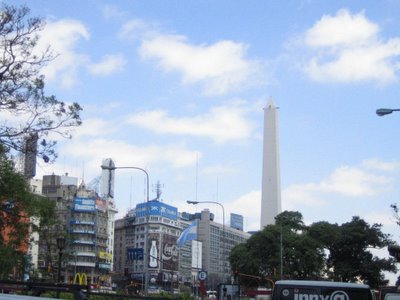
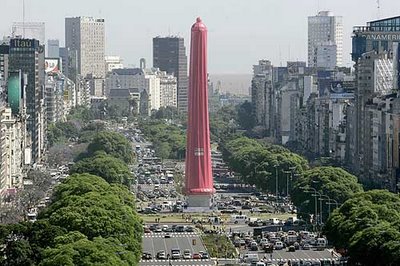


0 Comments:
Post a Comment
<< Home